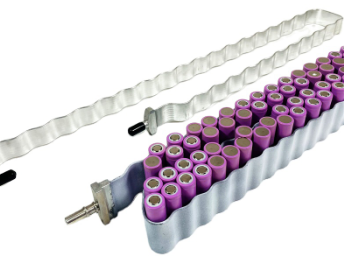
At the beginning of this article, we have mentioned that new energy sources such as wind energy and solar energy need the support of large-scale energy storage batteries. At present, the technology of mature large-scale energy storage batteries is still in the process of development. Existing rechargeable batteries have such problems as large-scale energy storage. For example, lead-acid batteries have specific energy, cycle life and environmental protection problems; nickel-metal hydride batteries have problems such as cost, specific energy, and cycle life. Lithium batteries also have problems. There are cost and yield issues.
If you choose a rechargeable battery for large-scale energy storage now, lead-acid batteries barely count. In fact, lead-acid batteries have gone through nearly 150 years of development, and are now widely used in various fields of transportation, communication, electricity, and military. It was invented by the French G. Plante in 1859. Its electrodes are mainly made of lead and its oxides, and the electrolyte is a sulfuric acid solution. In the charged state, the main component of the positive electrode is lead dioxide, and the main component of the negative electrode is lead; in the discharged state, the main component of the positive and negative electrodes is lead sulfate.
Since its invention, lead-acid batteries have always had an absolute advantage in chemical power sources. This is because of its low price, easy availability of raw materials, sufficient reliability in use, suitable for high current discharge and a wide range of ambient temperature and other advantages. However, lead-acid batteries have two main disadvantages: (1) water will be decomposed into hydrogen at the end of charging, and oxygen gas will be released, which requires frequent addition of acid and water, and heavy maintenance work; Limited battery applications. Therefore, in the past two decades, in order to solve the above two problems, countries all over the world have been racing to develop sealed lead-acid batteries (VRLA), hoping to seal the batteries and obtain clean green energy. Since 1996, VRLA batteries have basically replaced traditional flooded open batteries and have been recognized by the majority of users. But unfortunately, the so-called VRLA battery to this day cannot be 100% guaranteed to be sealed.

With the development and application of nickel-cadmium batteries, nickel-metal hydride batteries and lithium batteries, and the public’s increasing attention to environmental protection, lead-acid batteries are gradually being phased out in various fields. In the field of large-scale energy storage, it is obvious that lithium manganate batteries, especially lithium iron batteries, have great potential. Over time, lithium manganate batteries and lithium iron batteries that solve the cost problem will be widely used.
Finally, a brief introduction to the potential large-scale energy storage technology.
1. Vanadium battery. The full name of vanadium battery is vanadium redox flow battery (Vanadium Redox Battery, abbreviated as VRB). The electrochemical reaction is completed in the stack, and the solution returns to the storage tank after the reaction, and the active material flows continuously, thereby completing the charge and discharge. At present, there are two main technical problems in vanadium batteries. First, the pentavalent vanadium in the positive solution of vanadium batteries is prone to precipitation of vanadium pentoxide when it is left standing or the temperature is higher than 45 degrees Celsius. Second, the graphite plates are to be etched by the catholyte. If not handled properly, the graphite plate can be completely etched with a single charge, and the stack can only be scrapped. In addition, vanadium batteries are currently too expensive.

2. Magnetic levitation flywheel energy storage. Flywheel technology is the mutual conversion of mechanical energy and electrical energy to charge and discharge. It uses a high-speed rotating flywheel iron core as a medium for mechanical energy storage, and uses a motor/generator and an energy conversion control system to control the input and output of energy. In order to reduce the loss during operation and improve the speed and the efficiency of the energy storage device, the design of the flywheel energy storage device bearing generally uses the non-contact magnetic bearing technology, and the motor and the flywheel are sealed in a vacuum container to reduce wind resistance.
3. Superconducting energy storage. It stores the energy in the magnetic field of the superconducting coil, and realizes the charging and discharging of the energy storage device through electromagnetic mutual conversion. Since the coil has no resistance in the superconducting state, the energy loss of superconducting energy storage is very small. But superconductivity is achieved at ultra-low temperatures, and maintaining ultra-low temperatures is costly. Therefore, this technology will not be widely used until the maturity of high-temperature superconducting materials. YTthermal can give you the cold plate support.
